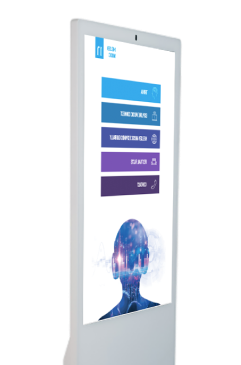

Event Solutions

Our Work

Key Components to a Digital Signage Content Management System
What exactly Is a Digital Signage Content Management System? Any brand that maintains an online presence is familiar with the idea of content management. Content management is "a set of processes and technologies that facilitates the collecting, management, and publication of information in any form or medium," according to Wikipedia's simplified definition. A content management system, or CMS, is the name for the technological component, which is the software. While digital signage content management allows businesses to successfully manage internal papers, it is now more commonly used to refer to the information that visitors see on a website. Whether the material is in the form of web pages, photographs, videos, or downloadable assets, the goal (should) be to increase interaction among customers, prospective customers, employees, or anyone else who visits. The technology used to provide material in a digital signage network is sometimes known as a content management system or CMS. A website, on the other hand, is not the same as a digital signage network. They cater to diverse marketing demands and target different consumers. Customers walking through a store can be captured and held captive by digital screens. They can also help with business communications and employee engagement, particularly for workers without a dedicated computer, access to the company intranet, or access to the corporate email. The same type of content files that a website can display can be displayed on digital screens. However, unlike a website, digital signage requires scheduling, labeling, monitoring, and deployment of digital material across a large network of digital display devices. That’s why the digital signage content management systems needed to manage each to be different. So, just what is a digital signage content management system? Any CMS must allow a company to gather, manage, and disseminate its content. You should be able to plan content pushes too many digital screens and players with a digital signage CMS. Visitors to a website share a similar experience, with the exception of a small level of customization for returning visitors. The numerous screens in a digital signage network, on the other hand, serve distinct audiences and objectives, necessitating wiser and more complex information delivery. Organizations with more than a few local digital screens require a content management system (CMS) that goes beyond the basics of content production, playlists, and scheduling. They want a content management platform for digital signage that can monitor the health of each screen or player and allow workers to troubleshoot and repair issues remotely. One that can improve network bandwidth while minimizing the influence on other operational systems' performance. One that easily interacts with existing enterprise systems, internal and external content sources, and third-party solutions (and leverages the data from them). Organizations also require their content management platform to assist them in analyzing the effectiveness of their digital signage content in order to make better decisions and improve performance.